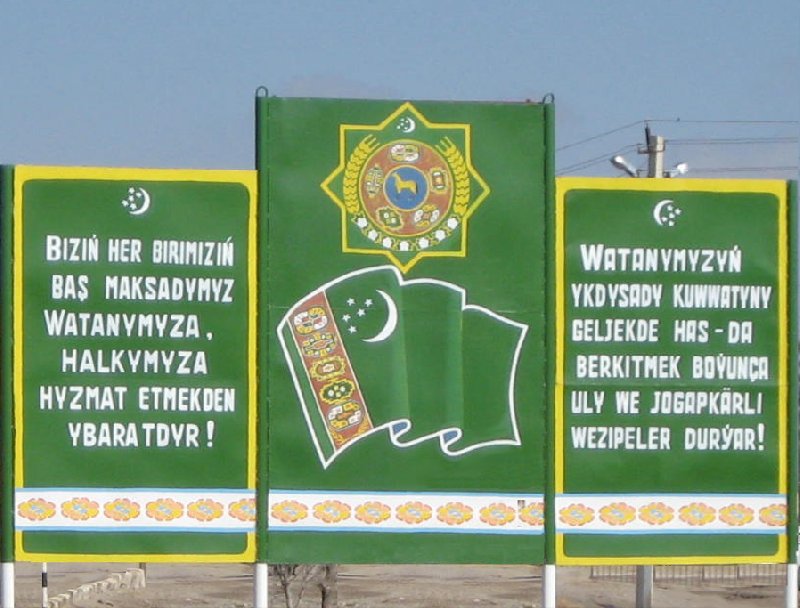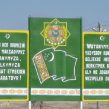
Despite Proclaimed Neutrality, Turkmenistan Increases Border Defenses
Publication: Eurasia Daily Monitor Volume: 11 Issue: 37
By:

In 1995, Turkmenistan proclaimed a policy of international diplomatic neutrality, and on December 12 of that year, the United Nations General Assembly unanimously adopted the Resolution on the Permanent Neutrality of Turkmenistan, with 25 countries co-sponsoring the resolution (United Nations General Assembly, January 11, 1996).
Despite the diplomatic hands-off approach of the past 18 years, on February 13, 2014, during a meeting in Ashgabat of Turkmenistan’s State Security Council—chaired by the country’s president and supreme commander-in-chief of the Armed Forces, Gurbanguly Berdimuhamedov—reports were read concerning governmental measures to strengthen state border security (Informatsiia AMI Trend, TURKMENinform, February 13). Moreover, law enforcement and military agencies also presented reports on their efforts to maintain public order and political stability, improve the armed forces’ material and technical bases, enhance their training, as well as boost the border forces’ fight against drug trafficking. Nonetheless, Berdimuhamedov noted that “Turkmenistan has always been and remains committed to the now centuries-old traditions of peace, friendship and good neighborliness, which largely determine the favorable climate in the whole Central Asian region” (Voice of Russia, February 14).
It is hardly surprising that Turkmenistan should be concerned about its borders, as several of its neighbors are politically unstable. Turkmenistan shares a 462-mile-long border with Afghanistan (the longest border with Afghanistan of all the Central Asian countries), a 616-mile frontier with Iran, 235 miles of border with Kazakhstan, 1,007 miles with Uzbekistan, as well as Caspian maritime frontiers with Azerbaijan, Iran, Russia and Kazakhstan.
In particular, Turkmenistan remains concerned about the instability in neighboring Afghanistan and has previously offered to mediate among the warring parties involved in the Afghan conflict, while also providing economic assistance to its neighbor, particularly supplying electricity (Vremia Vostoka, February 14). An estimated 1.5 million Turkmens live in Afghanistan—composing roughly 3 percent of the country’s overall population, primarily in Afghanistan’s northern Faryab and Jowzjan provinces, which border Turkmenistan. Thus, pursuing a proactive policy, Turkmenistan’s government has already reached out to ethnic-Turkmen leaders in Faryab and Jowzjan. In early February 2014, a group of Afghan clerics met with Turkmen officials, including Deputy Foreign Minister Wepa Hojiev. But highlighting the sensitivity of the issue, the meeting was not reported by state media in either country (Azatlyk, February 16).
Nonetheless, the turmoil in Afghanistan is slowly roiling toward Turkmenistan’s border. In April 2013, the fiercest fighting in more than a decade erupted in Faryab province. Local media reported a nine-day battle between Afghan National Army (ANA) troops and roughly 700 Taliban fighters. While the ANA ultimately prevailed, five months later fighting again flared up. Reportedly, “no go” zones under Taliban control currently exist in Faryab and Jowzjan provinces, causing increasing numbers of Afghanistan’s Turkmens to acquire arms (centrasia.ru, February 19).
Events further afield are also impacting events in Turkmenistan. In June 2013, Russian TV channels showed a Turkmen jihadi al-Qaeda commander captured by Syrian forces in Aleppo. Rovshan Gazakov, using the nom de guerre “Abu Abdullah,” stated that he and his compatriots arrived in Syria from Turkmenistan and that their initial training took place in the “Sheikh Murad” camp near Ashgabat. The government in Ashgabat promptly denied the allegations (centrasia.ru, February 11).
In recent years, outside nations have discreetly attempted to assist Turkmenistan in strengthening its border security. For example, in 2003, Austria’s Federal Ministry of the Interior founded the Central Asia Border Security Initiative to assist the Central Asian republics with border management and drug control. CABSI meetings take place once a year in Central Asia and bring together all Central Asian states, European Union members, and other interested countries to discuss current border-management and security activities as well as possible future cooperation in the area of border management (https://www.bomca.eu/cabsi.html).
The United States has also been involved in similar efforts bilaterally with Turkmenistan. In August 2004, the US Customs Service conducted a Strategic Enforcement Tracker training course for 25 officers of the Turkmenistan State Border Service in Ashgabat. Three Native American “Shadow Wolves” that work to track down illegal smuggling along the US-Mexico border shared their tracking expertise with the local border guards (United States Mission in Turkmenistan, Issue 34 Monthly Newsletter, August 2004).
In October 2009, at the opening of a new border crossing checkpoint at Farap on Turkmenistan’s border with Uzbekistan, US Chargé d’Affaires Sylvia Curran emphasized that “this Border Crossing Checkpoint is the third checkpoint [that] the United States Government has provided to Turkmenistan.” The first border checkpoint, “Altyn Asyr,” was opened in 2006 on the Iranian border and the second, “Imamnazar,” was opened in 2007 on the country’s border with Afghanistan—all were funded by the US (US Embassy–Ashgabat, PAS No 260, October 15, 2009).
US aid to Turkmenistan has been ongoing, if modest. In June 2013, the State Department reported, “The United States is providing technical assistance, including training, to increase the English language capacity of the Turkmen military. The United States government is also working with Turkmenistan’s counter-narcotics units and border patrol officers to improve their interdiction and border patrol skills, as well as countering transnational crimes, such as human trafficking and money laundering” (https://www.state.gov/documents/organization/213199.pdf).
Like others in the region, Turkmenistan is waiting to see what Afghanistan will look like after the US and the International Security Assistance Force (ISAF) drawdown is largely completed in December 2014. The West pledges to continue to be regionally engaged as the troop drawdown proceeds. And the second annual EU–Central Asia High Level Security Dialogue will be held in Dushanbe this summer, focusing on Afghanistan in the post-transition period (https://www.iss.europa.eu/publications/detail/article/horizon-2014-central-asia/). Still, should the massive flow of Afghan narcotics passing through Turkmenistan on its way to Russia and the European Union increase following the Western forces’ exit, this may strain Ashgabat’s relations with the West.
For the near future, the capacity of Turkmenistan’s security and military forces will remain relatively poor. Furthermore, as the country’s neutrality policy has left it outside of regional security groupings like the Shanghai Cooperation Organization (SCO) and Collective Security Treaty Organization (CSTO), Turkmenistan’s potential political and security problems remain outside formal assistance from these organizations or its members, leaving Ashgabat to face internal or external threats alone. In such a case, Turkmenistan might find that its explicit neutrality and lack of defense agreements with other countries is a diplomatic liability rather than an asset.




